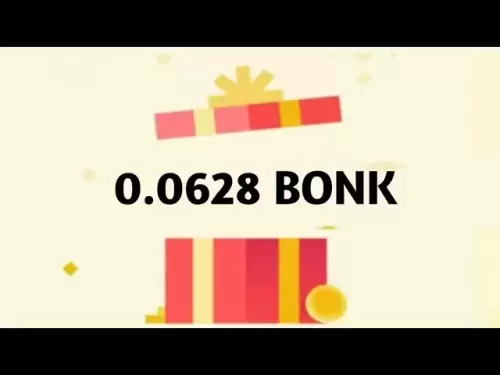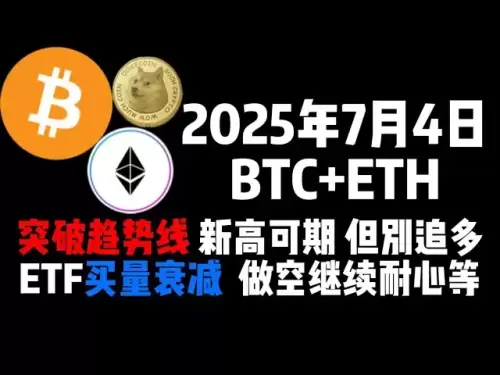-
 Bitcoin
Bitcoin $107,758.1435
-1.45% -
 Ethereum
Ethereum $2,490.6114
-3.32% -
 Tether USDt
Tether USDt $1.0004
0.00% -
 XRP
XRP $2.2042
-2.04% -
 BNB
BNB $651.4818
-1.12% -
 Solana
Solana $145.8782
-3.02% -
 USDC
USDC $0.9999
0.00% -
 TRON
TRON $0.2819
-1.39% -
 Dogecoin
Dogecoin $0.1621
-4.58% -
 Cardano
Cardano $0.5658
-4.18% -
 Hyperliquid
Hyperliquid $37.8181
-6.63% -
 Sui
Sui $2.8404
-4.91% -
 Bitcoin Cash
Bitcoin Cash $481.3703
-2.30% -
 Chainlink
Chainlink $13.0043
-4.79% -
 UNUS SED LEO
UNUS SED LEO $9.0464
0.26% -
 Avalanche
Avalanche $17.6115
-4.39% -
 Stellar
Stellar $0.2359
-2.11% -
 Toncoin
Toncoin $2.7507
-3.93% -
 Shiba Inu
Shiba Inu $0.0...01126
-4.41% -
 Litecoin
Litecoin $86.1256
-3.27% -
 Hedera
Hedera $0.1530
-3.13% -
 Monero
Monero $312.7785
-2.81% -
 Dai
Dai $1.0000
-0.01% -
 Ethena USDe
Ethena USDe $1.0001
-0.02% -
 Polkadot
Polkadot $3.3287
-5.55% -
 Bitget Token
Bitget Token $4.3840
-4.00% -
 Uniswap
Uniswap $6.8370
-10.63% -
 Pepe
Pepe $0.0...09548
-4.25% -
 Aave
Aave $260.2526
-6.11% -
 Pi
Pi $0.4658
-5.45%
What is the difference between market orders and pending orders of OKX contracts? Are there any differences in handling fees?
On OKX, market orders execute instantly at the best available price, while pending orders offer price control but no execution guarantee; both have different fee structures.
May 02, 2025 at 03:28 am
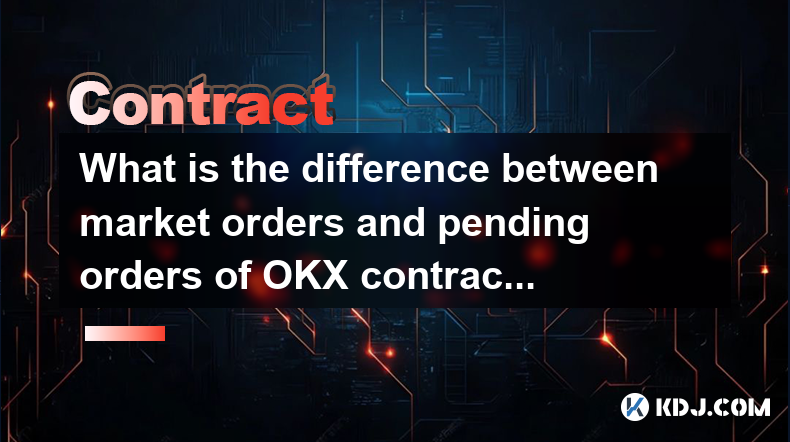
In the world of cryptocurrency trading, understanding the different types of orders available on exchanges like OKX is crucial for effective trading. OKX, one of the leading cryptocurrency exchanges, offers various order types for its futures and perpetual contracts, including market orders and pending orders. This article will delve into the differences between these two types of orders, focusing specifically on OKX contracts, and discuss any differences in handling fees.
Market Orders on OKX Contracts
Market orders on OKX allow traders to buy or sell a cryptocurrency contract immediately at the best available price in the market. When a trader places a market order, the order is executed instantly, ensuring that the trader enters or exits a position without delay. This type of order is particularly useful in fast-moving markets where securing a position quickly is more important than the exact price at which the order is filled.
To place a market order on OKX for a contract:
- Navigate to the trading interface of OKX and select the futures or perpetual contract you wish to trade.
- Choose the 'Market' order type from the available options.
- Enter the quantity of the contract you want to buy or sell.
- Confirm the order, and it will be executed at the current market price.
Market orders are straightforward and ensure immediate execution, but they can be subject to slippage, especially in volatile markets. Slippage occurs when the price at which the order is executed differs from the expected price due to rapid price movements.
Pending Orders on OKX Contracts
Pending orders, also known as limit orders, allow traders to set a specific price at which they want to buy or sell a cryptocurrency contract. Unlike market orders, pending orders are not executed immediately. Instead, they are placed in the order book and will only be executed if the market price reaches the specified price level.
There are several types of pending orders on OKX, including:
- Limit Orders: These are the most common type of pending order. Traders specify a price at which they want to buy or sell a contract. If the market reaches this price, the order is executed.
- Stop Orders: These orders are used to limit losses or protect profits. A stop order becomes a market order once the stop price is reached.
- Take Profit Orders: These are used to automatically close a position when it reaches a certain profit level.
- Stop-Limit Orders: These combine the features of stop orders and limit orders. When the stop price is reached, a limit order is placed instead of a market order.
To place a pending order on OKX for a contract:
- Navigate to the trading interface of OKX and select the futures or perpetual contract you wish to trade.
- Choose the 'Limit', 'Stop', 'Take Profit', or 'Stop-Limit' order type from the available options.
- Enter the quantity of the contract you want to buy or sell.
- Specify the price at which you want the order to be executed.
- Confirm the order, and it will be placed in the order book, waiting for the market to reach the specified price.
Pending orders provide more control over the execution price but do not guarantee execution, as the market may never reach the specified price level.
Differences in Handling Fees
When it comes to handling fees, both market orders and pending orders on OKX contracts are subject to the same fee structure. OKX charges a taker fee for market orders, as these orders take liquidity from the order book. For pending orders, OKX charges a maker fee if the order adds liquidity to the order book and is not immediately filled.
The specific fee rates depend on the user's trading volume and the type of contract being traded. For example, as of the latest data, OKX charges a taker fee of 0.02% and a maker fee of 0.01% for most futures and perpetual contracts. However, these rates can vary based on the user's VIP level and other factors.
To check the current fee structure on OKX:
- Log in to your OKX account.
- Navigate to the 'Fees' section under your account settings.
- Review the fee rates applicable to your trading activities.
It's important for traders to be aware of these fees, as they can impact the overall profitability of their trades.
Execution Speed and Price Control
One of the key differences between market orders and pending orders is the execution speed and price control. Market orders offer instant execution but little control over the price, making them suitable for traders who prioritize speed over price precision. In contrast, pending orders provide greater control over the execution price but may not be executed if the market does not reach the specified price level.
For example, if a trader wants to buy a Bitcoin perpetual contract and the current market price is $30,000, they could:
- Place a market order to buy the contract immediately at the best available price, which might be slightly higher or lower than $30,000 due to slippage.
- Place a pending order to buy the contract at $29,900, which would only be executed if the market price drops to this level.
This difference in execution speed and price control is crucial for traders to consider when choosing between market and pending orders.
Risk Management and Strategy
The choice between market orders and pending orders also impacts risk management and trading strategy. Market orders are often used by traders who need to enter or exit positions quickly, such as in response to breaking news or significant market events. These orders can help manage risk by ensuring that a position is opened or closed without delay.
On the other hand, pending orders are essential for traders who want to implement more sophisticated risk management strategies. For instance, a trader might use a stop-loss order to limit potential losses or a take-profit order to secure profits automatically. These orders allow traders to set predefined exit points, which can help manage risk more effectively.
To illustrate, a trader holding a long position in an Ethereum futures contract might:
- Place a stop-loss order at $2,000 to limit potential losses if the market price drops.
- Place a take-profit order at $2,500 to automatically close the position and secure profits if the market price rises to this level.
By using pending orders, traders can implement these strategies without needing to monitor the market constantly.
Frequently Asked Questions
Q1: Can I cancel a pending order on OKX after it has been placed?
Yes, you can cancel a pending order on OKX at any time before it is executed. To do this, navigate to the 'Open Orders' section of the trading interface, find the order you wish to cancel, and click on the 'Cancel' button next to it.
Q2: What happens if the market price never reaches the price specified in my pending order?
If the market price never reaches the price specified in your pending order, the order will remain in the order book until it is either canceled by you or expires according to the exchange's rules. On OKX, some pending orders have expiration times, so it's important to check the specific terms for each order type.
Q3: Are there any minimum or maximum order sizes for market and pending orders on OKX contracts?
Yes, OKX has minimum and maximum order sizes for its contracts, which can vary depending on the specific contract being traded. These limits are designed to ensure market stability and liquidity. You can find the specific limits for each contract in the trading interface on OKX.
Q4: Can I use both market and pending orders in the same trading strategy on OKX?
Yes, many traders use a combination of market and pending orders to implement their trading strategies on OKX. For example, a trader might use a market order to enter a position quickly and then use pending orders to set stop-loss and take-profit levels to manage the position effectively.
Disclaimer:info@kdj.com
The information provided is not trading advice. kdj.com does not assume any responsibility for any investments made based on the information provided in this article. Cryptocurrencies are highly volatile and it is highly recommended that you invest with caution after thorough research!
If you believe that the content used on this website infringes your copyright, please contact us immediately (info@kdj.com) and we will delete it promptly.
- Bitcoin's Pattern Break: Are HODLers the Key to the Next Surge?
- 2025-07-04 18:50:12
- Bitcoin Price, Trump's Bill, and the $150K Dream: A NYC Take
- 2025-07-04 19:50:12
- Ethereum, LILPEPE, and the July Bounce: Will Pepe Steal ETH's Thunder?
- 2025-07-04 19:10:12
- Binance Institutional Loans: Unlocking 4x Leverage and Zero Interest for Whales
- 2025-07-04 19:15:12
- Bitcoin Bull Run: Analysts Eye Peak in Late 2025?
- 2025-07-04 19:20:13
- Pepe Indicators, Bullish Forecast: Can the Meme Coin Rally?
- 2025-07-04 19:25:12
Related knowledge
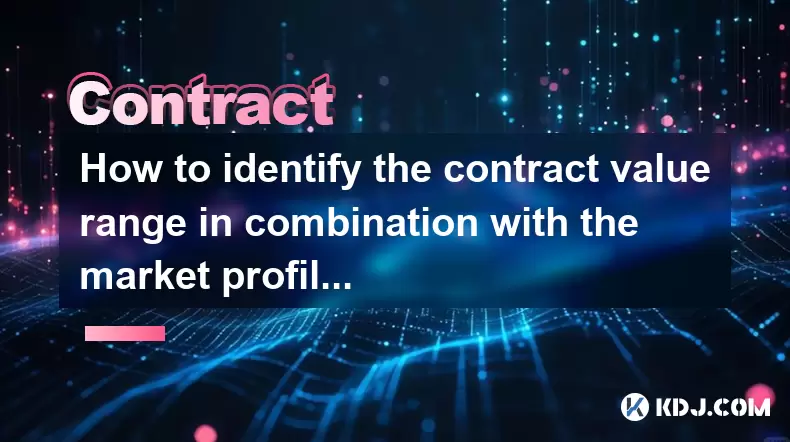
How to identify the contract value range in combination with the market profile?
Jul 02,2025 at 10:56pm
Understanding the Market ProfileTo effectively identify the contract value range in combination with the market profile, it's essential to first understand what each concept entails. The market profile is a framework that helps traders visualize how price and time interact across a given period, typically a trading day or session. It provides insights i...
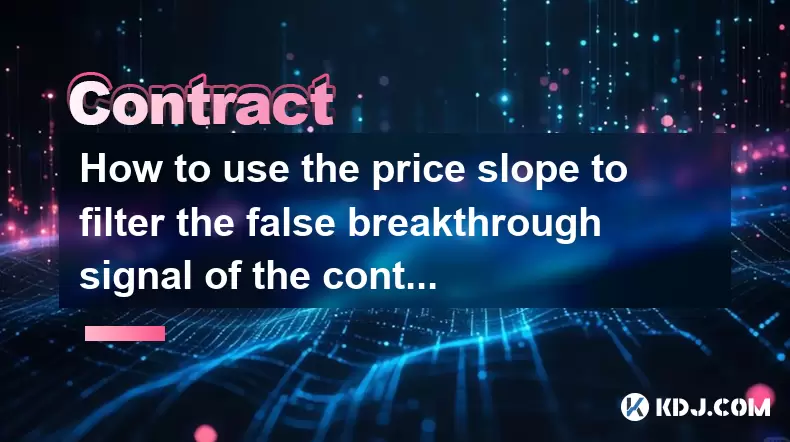
How to use the price slope to filter the false breakthrough signal of the contract?
Jun 20,2025 at 06:56pm
Understanding the Concept of Price Slope in Contract TradingIn contract trading, especially within cryptocurrency derivatives markets, price slope refers to the rate at which the price changes over a specific time period. It helps traders assess the strength and sustainability of a trend. A steep slope may indicate strong momentum, while a shallow slope...
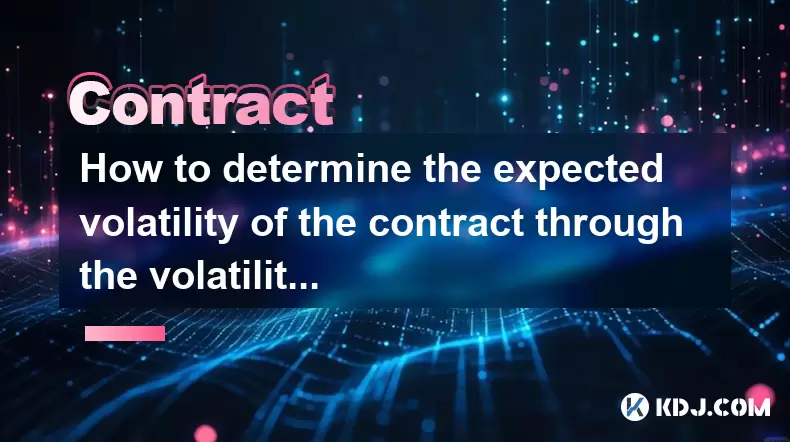
How to determine the expected volatility of the contract through the volatility cone?
Jun 19,2025 at 12:28pm
Understanding the Basics of Volatility in Cryptocurrency ContractsIn the realm of cryptocurrency trading, volatility is a key metric that traders use to assess potential risk and reward. When dealing with futures contracts, understanding how volatile an asset might become over time is crucial for position sizing, risk management, and strategy developmen...
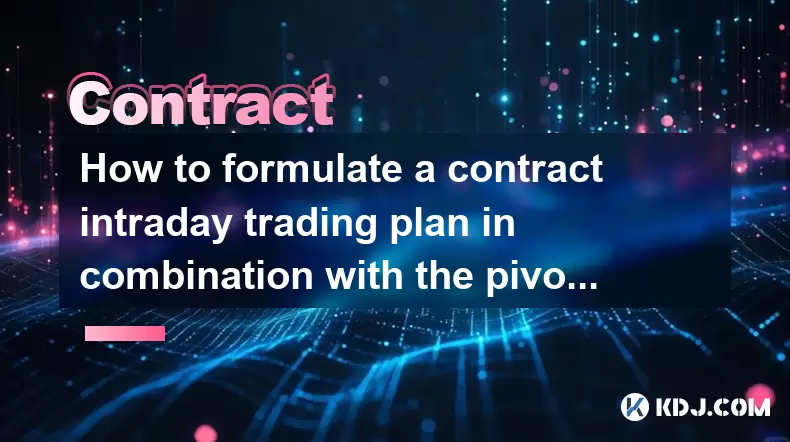
How to formulate a contract intraday trading plan in combination with the pivot point system?
Jun 21,2025 at 03:42pm
Understanding the Basics of Pivot Points in Cryptocurrency TradingPivot points are technical analysis tools used by traders to identify potential support and resistance levels. These levels are calculated using the previous day's high, low, and closing prices. In the context of cryptocurrency trading, where markets operate 24/7, pivot points help trader...
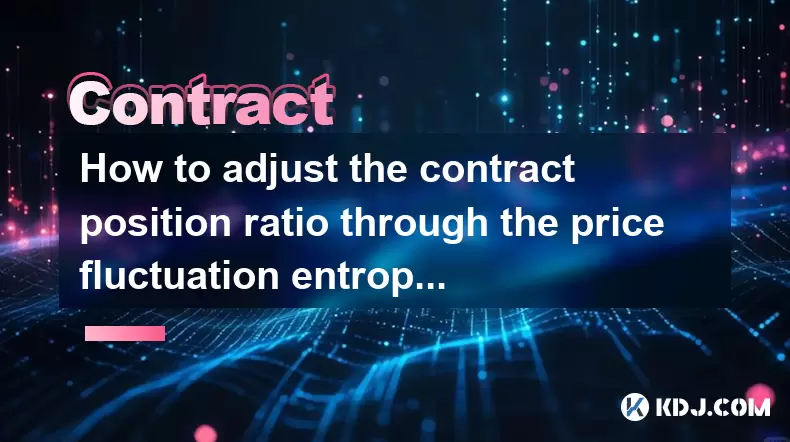
How to adjust the contract position ratio through the price fluctuation entropy?
Jun 22,2025 at 11:42am
Understanding Price Fluctuation Entropy in Cryptocurrency ContractsIn the world of cryptocurrency futures trading, price fluctuation entropy is a relatively new concept used to measure market volatility and uncertainty. It derives from information theory, where entropy refers to the degree of randomness or unpredictability in a system. In crypto contrac...
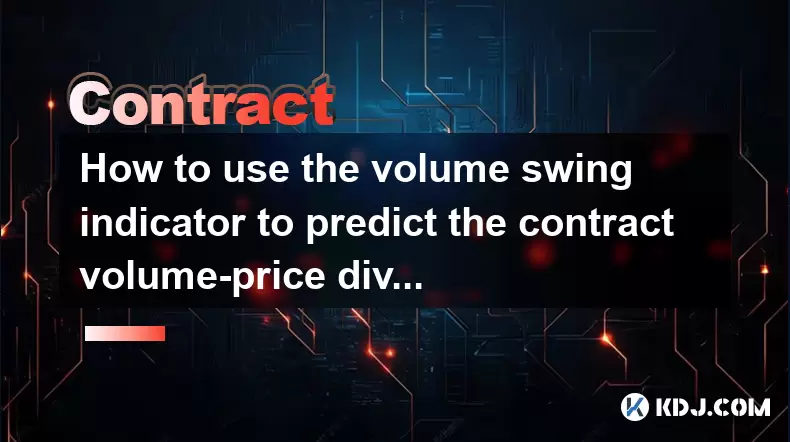
How to use the volume swing indicator to predict the contract volume-price divergence?
Jun 18,2025 at 11:42pm
Understanding the Volume Swing IndicatorThe volume swing indicator is a technical analysis tool used primarily in cryptocurrency trading to evaluate changes in volume over time. Unlike price-based indicators, this metric focuses solely on trading volume, which can provide early signals about potential market reversals or continuations. The key idea behi...

How to identify the contract value range in combination with the market profile?
Jul 02,2025 at 10:56pm
Understanding the Market ProfileTo effectively identify the contract value range in combination with the market profile, it's essential to first understand what each concept entails. The market profile is a framework that helps traders visualize how price and time interact across a given period, typically a trading day or session. It provides insights i...

How to use the price slope to filter the false breakthrough signal of the contract?
Jun 20,2025 at 06:56pm
Understanding the Concept of Price Slope in Contract TradingIn contract trading, especially within cryptocurrency derivatives markets, price slope refers to the rate at which the price changes over a specific time period. It helps traders assess the strength and sustainability of a trend. A steep slope may indicate strong momentum, while a shallow slope...

How to determine the expected volatility of the contract through the volatility cone?
Jun 19,2025 at 12:28pm
Understanding the Basics of Volatility in Cryptocurrency ContractsIn the realm of cryptocurrency trading, volatility is a key metric that traders use to assess potential risk and reward. When dealing with futures contracts, understanding how volatile an asset might become over time is crucial for position sizing, risk management, and strategy developmen...

How to formulate a contract intraday trading plan in combination with the pivot point system?
Jun 21,2025 at 03:42pm
Understanding the Basics of Pivot Points in Cryptocurrency TradingPivot points are technical analysis tools used by traders to identify potential support and resistance levels. These levels are calculated using the previous day's high, low, and closing prices. In the context of cryptocurrency trading, where markets operate 24/7, pivot points help trader...

How to adjust the contract position ratio through the price fluctuation entropy?
Jun 22,2025 at 11:42am
Understanding Price Fluctuation Entropy in Cryptocurrency ContractsIn the world of cryptocurrency futures trading, price fluctuation entropy is a relatively new concept used to measure market volatility and uncertainty. It derives from information theory, where entropy refers to the degree of randomness or unpredictability in a system. In crypto contrac...

How to use the volume swing indicator to predict the contract volume-price divergence?
Jun 18,2025 at 11:42pm
Understanding the Volume Swing IndicatorThe volume swing indicator is a technical analysis tool used primarily in cryptocurrency trading to evaluate changes in volume over time. Unlike price-based indicators, this metric focuses solely on trading volume, which can provide early signals about potential market reversals or continuations. The key idea behi...
See all articles























